
Friday, 9 June 2023, 6:00pm pot luck, 7:00pm keynote talk
Flory Building, Douglas County Fairgrounds, 2120 Harper St., Lawrence KS 66044
We’re back in person, after a two year hiatus! The Sustainability Action Network annual meeting will feature two speakers who are knowledgeable and diligent in furthering ecological sustainability in City of Lawrence government.
-
Kathy Richardson, Lawrence Sustainability Director, will explain the policy framework that she overseas with the city’s Sustainability Advisory Board.
-
Melinda Harger, Assistant Director of Municipal Services and Operations, will describe how her team is incorporating sustainable design, energy conservation, and renewables into new construction of all city facilities.
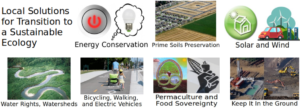
Sustainability Action has been advancing ecological sustainability since 2007. We focus on helping individuals live a sustainable lifestyle, while pushing for institutional policy change that can impact the broader population. We work in areas of energy conservation and renewables, prime agricultural soils preservation, biodiversity conservation, healthy climate, multi-modal transportation, local food, and permaculture.
Some of our 2022 actions and accomplishments include:
- Hosted the largest electric vehicle showcase in our five years of events
- Got Evergy to designate a trail alignment for the Atchison Creek Trail to traverse their new substation
- Partnered with Sustainability Advisory Board urging City Commission to adopt plastic bag ban
- Worked with a coalition to fend off the Kansas Legislature’s attempt to preempt local single-use plastics bans.
- Got the City of Lawrence to budget for an electric street sweeper to clear bikeway debris
- Raised alarm that Wakarusa Dr. bridge over Wakarusa River will be a huge sprawl driver
- Partnered with Sustainability Advisory Board urging City Commission adopt Natural Landscaping Ordinance
The meeting will also include: an introduction to our Board, a review of our 2022 accomplishments, an open discussion on projects for the upcoming year, a brief financial report, and Board of Directors election.
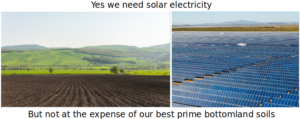
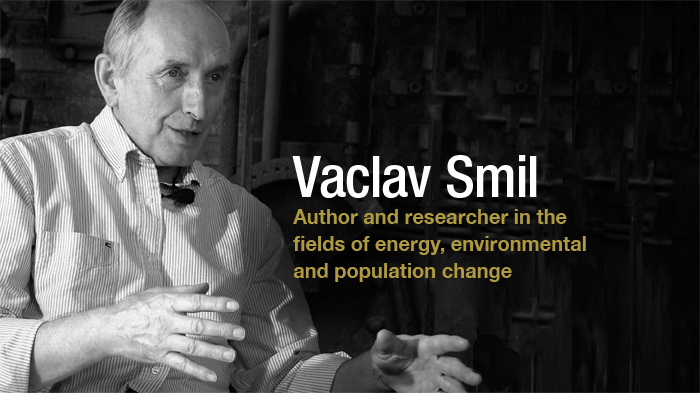
Vaclav Smil: energy cuts more viable than growing renewables
Vaclav Smil does interdisciplinary research in the fields of energy, environmental and population change, food production, history of technical innovation, risk assessment, and public policy. He has published more than 40 books and about 500 papers on these topics. He is a Distinguished Professor Emeritus at the University of Manitoba. “Humanity has experienced three major energy transitions and is now struggling to kick off a fourth. In the past, humanity has typically adopted energy sources that have greater ‘power density’, packing more punch per gram and requiring less land to produce. Renewables, however, are lower in density than fossil fuels. In a future powered by renewable energy, society might have to devote 100 or even 1000 times more land area to energy production than today. That shift, Smil says, could have enormous negative impacts on agriculture, 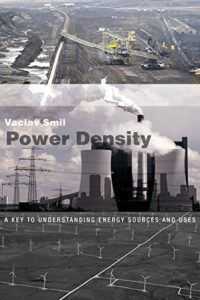 biodiversity, and environmental quality. Meanwhile, despite years of promotion and hope, wind and solar account for just about 1% of the world’s primary energy mix. Smil suggested at one recent lecture that if we all cut consumption, lived more efficiently, and ate less meat, the biosphere would do fine. That’s it’, Smil says. ‘Nobody is really talking about it’.” More at – Meet Vaclav Smil, the man who has quietly shaped how the world thinks about energy | Science | AAAS.
biodiversity, and environmental quality. Meanwhile, despite years of promotion and hope, wind and solar account for just about 1% of the world’s primary energy mix. Smil suggested at one recent lecture that if we all cut consumption, lived more efficiently, and ate less meat, the biosphere would do fine. That’s it’, Smil says. ‘Nobody is really talking about it’.” More at – Meet Vaclav Smil, the man who has quietly shaped how the world thinks about energy | Science | AAAS.
Vaclav Smil: renewables transition can’t meet climate deadlines
Los Angeles Times interview of Vaclav Smil, economist and distinguished professor emeritus at the University of Manitoba:
“Q: Much of the climate debate, you write, is dominated by catastrophists who are certain humanity finds itself on the eve of destruction, and that technology will save the human race. How should the rest of us think about real solutions?
A: Nothing can be more counterproductive than any certainty regarding complex affairs. In managing our energy affairs we should not waste 40% of our food, not heat or cool poorly designed but oversize houses, not waste fuel and materials driving SUVs.
Q: Many people think we can rapidly switch to renewable energy. You believe this is a delusion, and the transformation will take decades.
A: It’s not a matter of belief. It’s the size and inertia of the global energy system. Fossil fuels now supply about 83% of the world’s energy. What are the chances that after going from 86% to 83% during the first two decades of the 21st century the world will go from 83% to zero during the next two decades?
Q: You call the Four Pillars of Modern Civilization ammonia, plastics, steel, and concrete. It seems most people think of only electricity generation and transportation.
A: You are quite right, most people think of decarbonization as just an electricity problem. Without nitrogen fertilizers based mostly on natural gas we could feed only about half of today’s humanity. No material is made in larger quantity than cement. Steel comes second and iron smelting needs coke made from coal. Synthesis of plastics needs natural gas and oil as feedstocks and fuel. Making just these four materials requires nearly 20% of the world’s total energy supply generating about 25% of all greenhouse gas emissions. Decarbonizing this massive demand cannot be done in a matter of years.”
More at – The energy historian who says rapid decarbonization is a fantasy | Los Angeles Times.
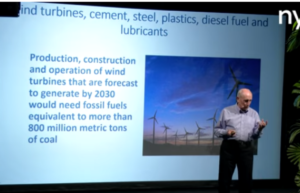
Vaclav Smil: hope for quick shift to renewables is wishful thinking
“That’s Vaclav Smil, the prolific University of Manitoba thinker, writing in this month’s issue of Scientific American. When Smil says something I usually listen. Smil starts by noting an underappreciated fact, that only 3.35% of the 10% of so energy that renewables are providing right now comes from ‘new’ renewables — solar, wind, and liquid biofuels. The majority of renewables are still of the ‘old’ variety, hydroelectric power and wood chips. Sadly, new wind and solar currently provide a tiny fraction of national energy needs — wind: 1.19%, solar: 0.16% (2014 stats). Smil’s core argument is simple: While reasonably promising, renewable energy is simply not quick and widespread enough. It has delivered very little in terms of overall contributions to the nation’s energy portfolio. When it comes to dreams of rapid renewable expansion, as Smil tells us, history is not on our side. Even traditional sources like coal, oil and natural gas took about 50 to 75 years to contribute significantly to the energy portfolio. What can we do to make this transition at least somewhat easier? Energy efficiency for one is a very pressing need. As Smil says, ‘Recent studies have shown that there are no insurmountable technical problems to reducing energy use by one third’.” More at – Vaclav Smil: “The great hope for a quick and sweeping transition to renewable energy is wishful thinking” | Scientific American.
 Vaclav Smil: “What I see when I see a wind turbine”
Vaclav Smil: “What I see when I see a wind turbine”
“Although wind turbines exploit the wind, which is as free and as green as energy can be, the machines themselves are pure embodiments of fossil fuels. Large trucks bring materials to the site, earth-moving equipment beats a path, and large cranes erect the structures. All these machines burn diesel fuel. So do the freight trains and cargo ships that convey the materials. A lot of energy goes into making steel. To make the steel required for wind turbines that might operate by 2030, you’d need fossil fuels equivalent to more than 600 million metric tons of coal. A 5-MW turbine has three roughly 60-meter-long airfoils, each weighing about 15 metric tons, made mostly from glass-fiber-reinforced epoxy or polyester resins. The glass is made by melting silicon dioxide in furnaces fired by natural gas. The resins begin with ethylene derived most commonly from liquefied petroleum gas or natural gas. To get 2.5 TW of installed wind power by 2030, we would need to incorporate the equivalent of about 90 million metric tons of crude oil. For a long time to come — until all energies used to produce wind turbines and photovoltaic cells come from renewable energy sources — modern civilization will remain fundamentally dependent on fossil fuels.” More at – What I see when I see a wind turbine (Numbers Don’t Lie) | IEEE Journal.
Vaclav Smil: energy transitions, crunching the numbers
YouTube video and notes: “Humanity initially derived the majority of its energy from biomass. It then transitioned to coal until midway through the 20th century, when oil became the majority source. In Smil’s opinion, peak oil is not coming any time soon. He states that the only reason we are attempting to decarbonize is to combat global warming. In 1991, humanity derived 91% of our primary energy from fossil fuels. Even as late as 2018, we still derived 89% of our primary energy from fossil fuels, despite huge amounts of investment in renewables. We are a fossil fueled civilization. The production of the four pillars of modern society — steel, cement, ammonia (used for fertilizer), and plastics — is very energy intensive, and will be very difficult to decarbonize. In the years since 1992, society has become more carbon intensive in spite of all the money that has been invested in decarbonization and greener technology. The decarbonization of the four pillars is almost certainly going to be far more difficult than the decarbonization of the electricity and transportation sectors. Smil states what he feels is the best way for humanity to decarbonize: Absolute cuts in per capita energy consumption, particularly in rich countries. Smil feels that combating excessive consumption is the best way to decarbonize. More at – Vaclav Smil Lecture on Energy Transitions — Video & Notes | Medium.com.








Recent Comments